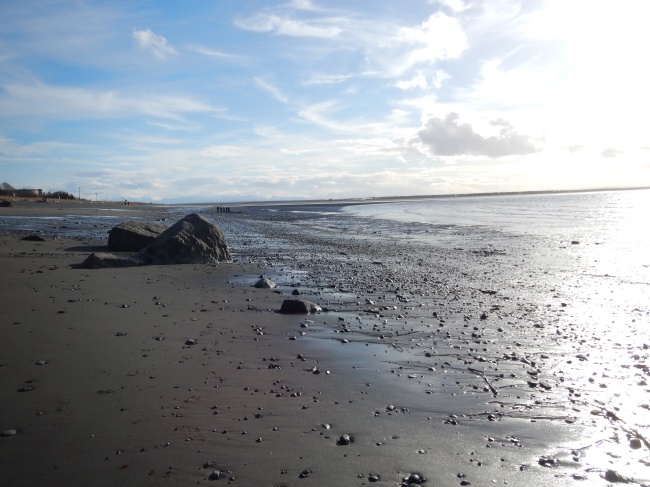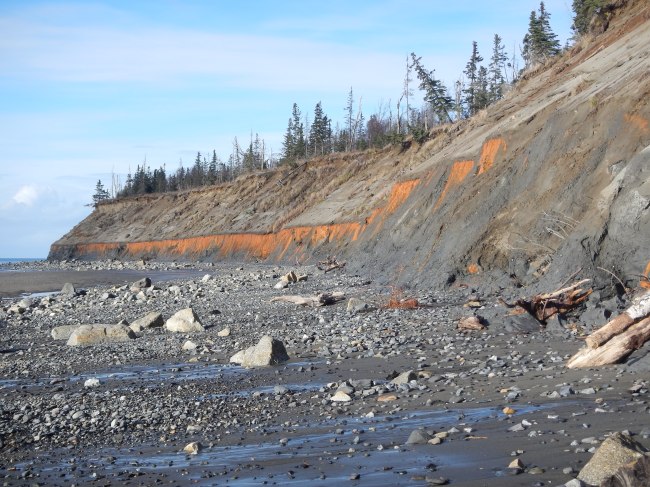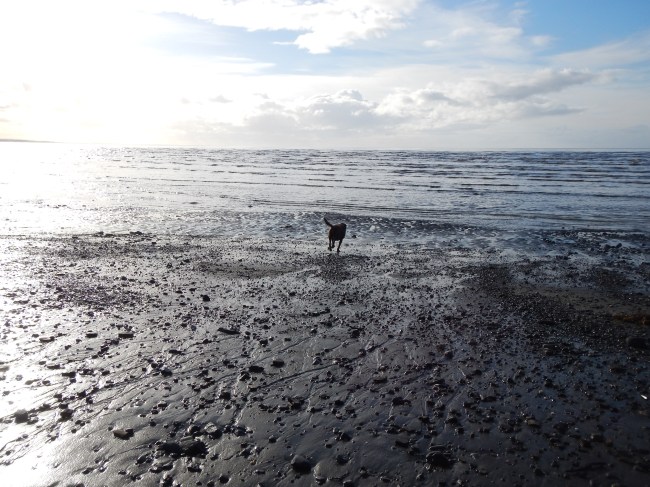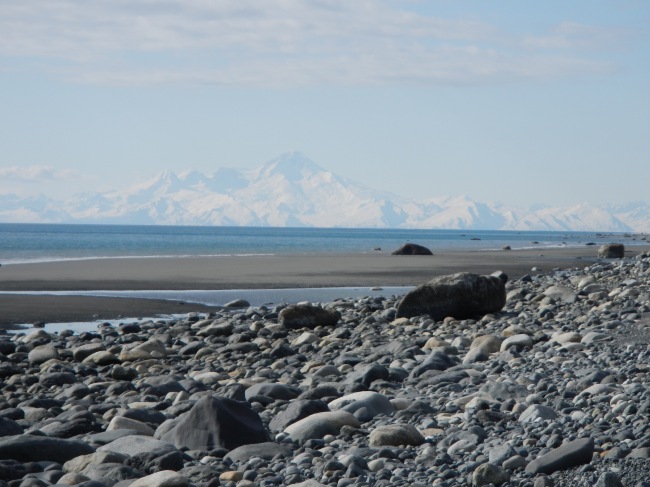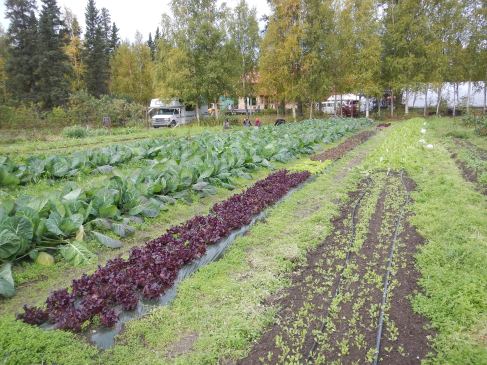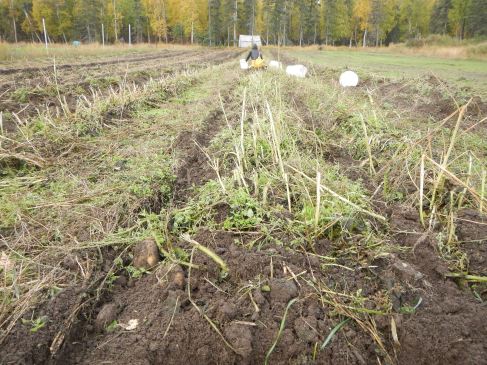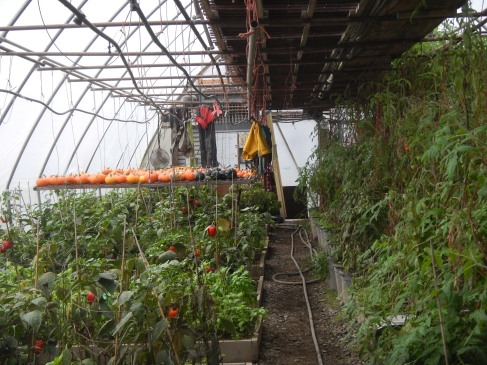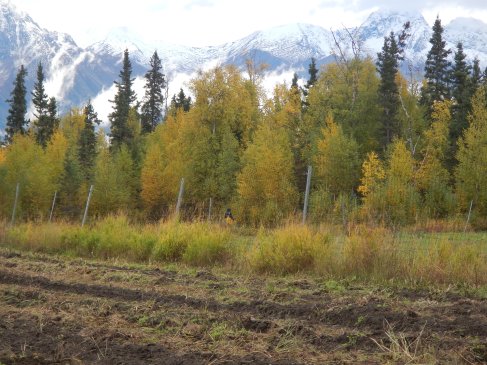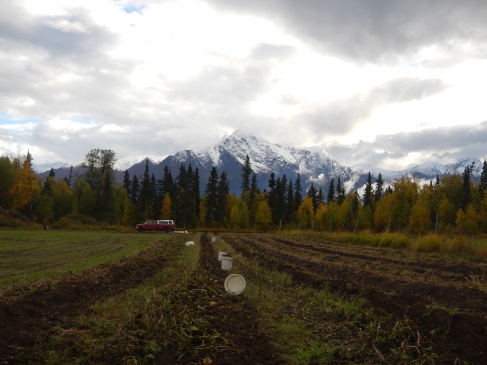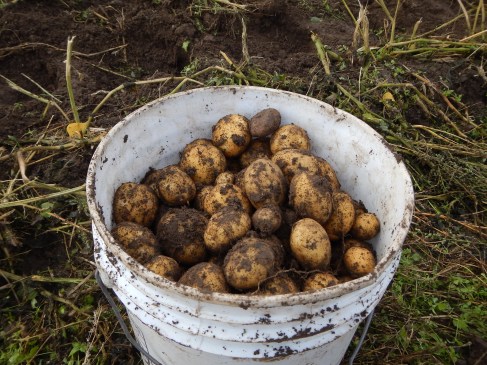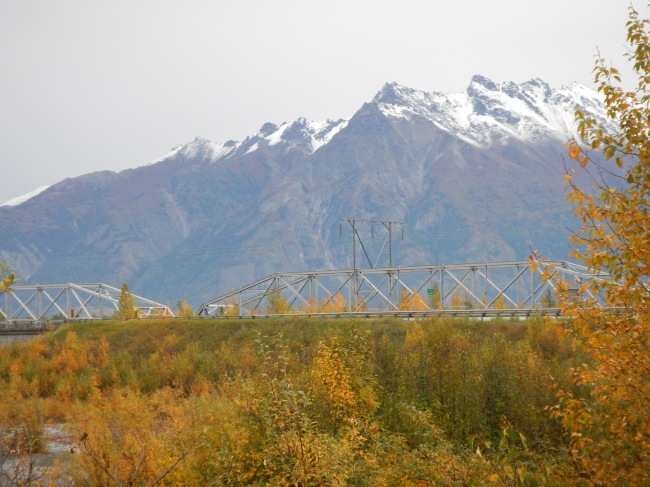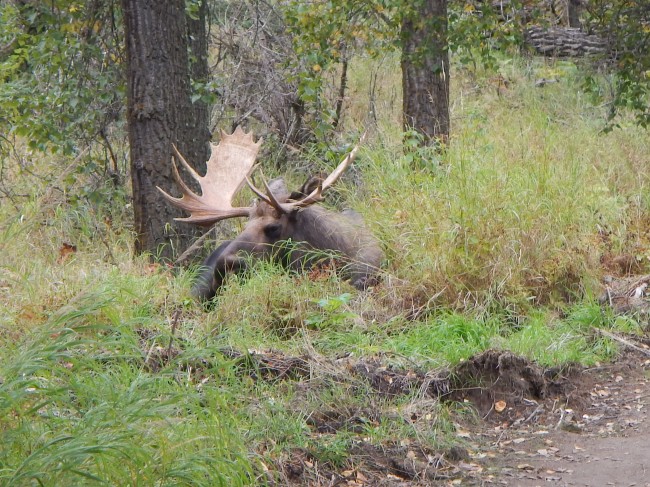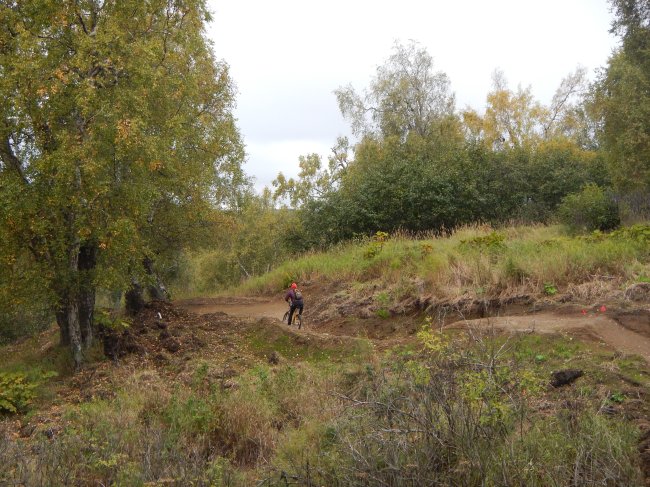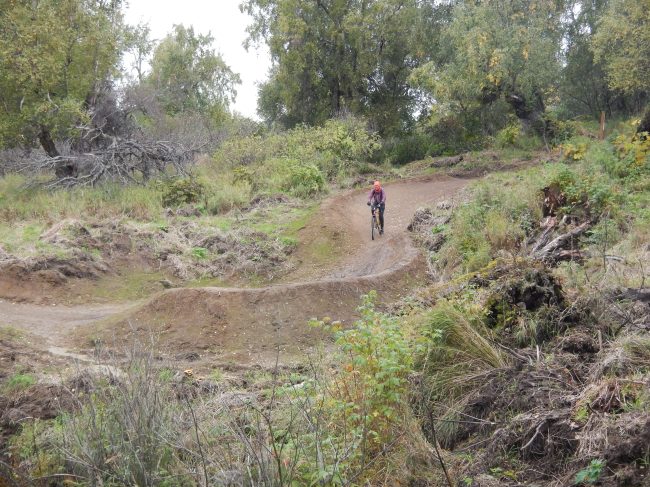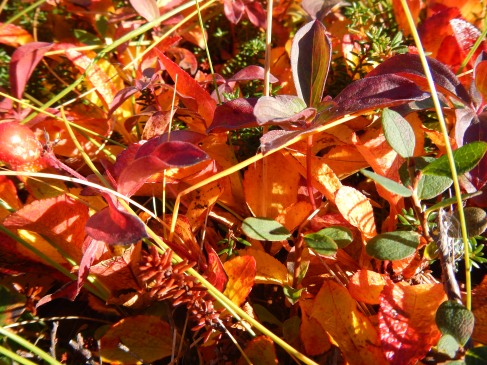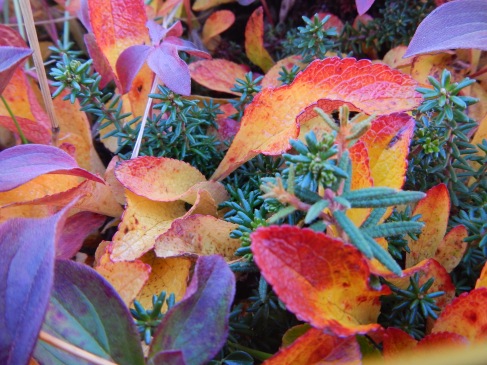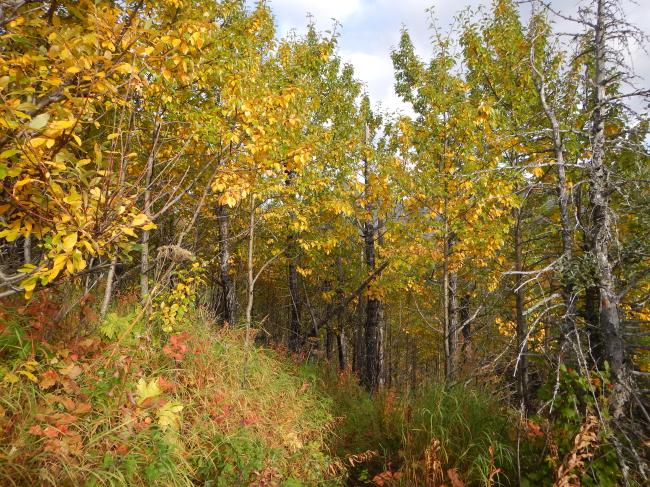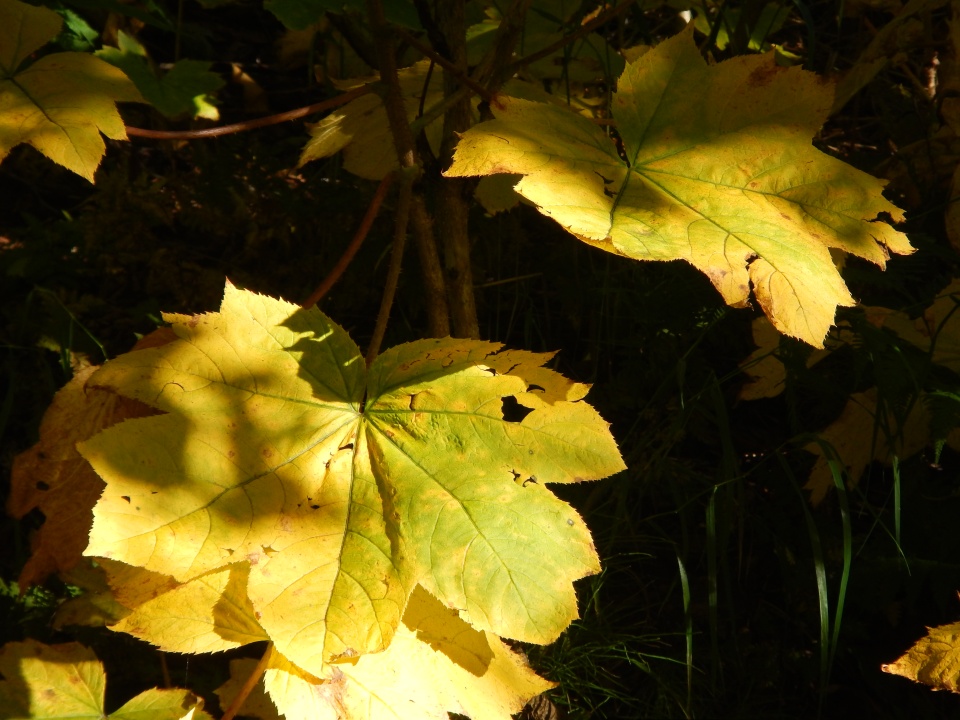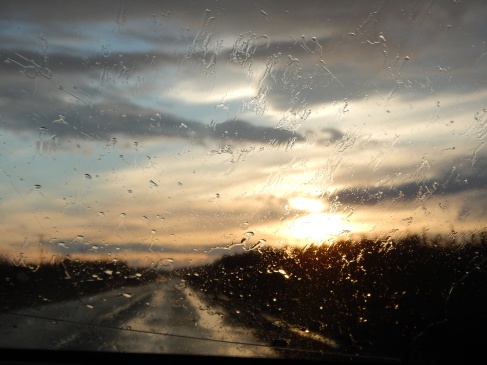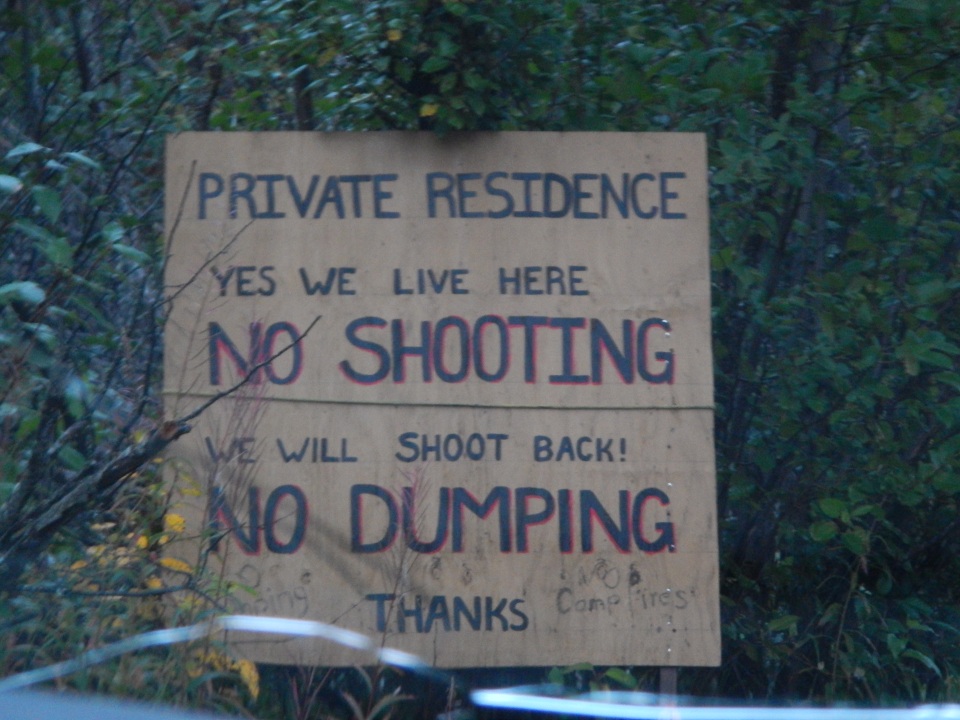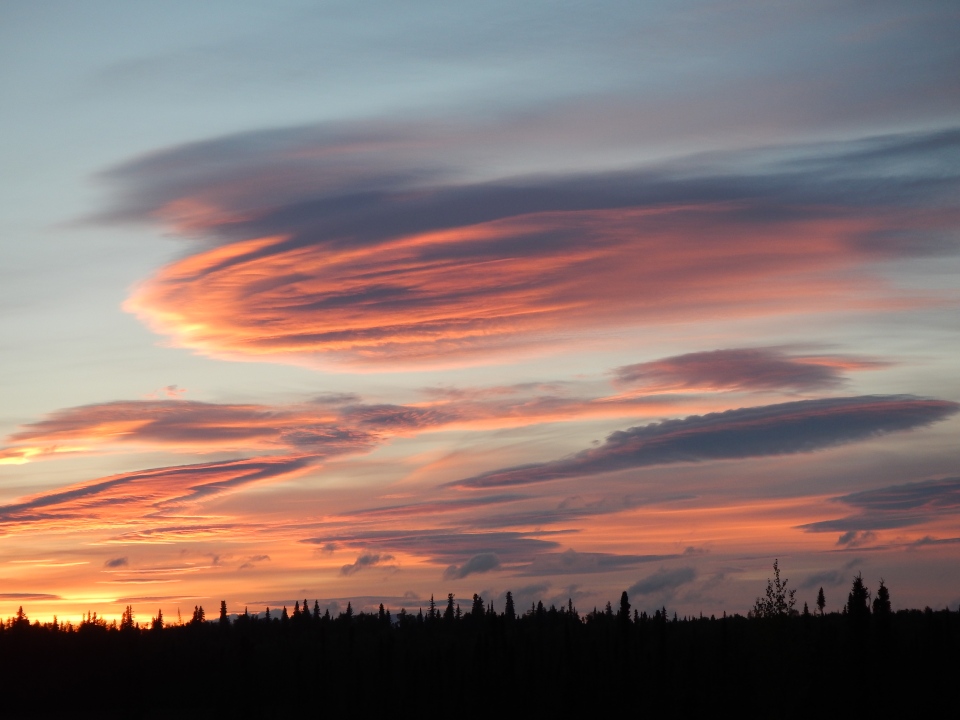In September, my friend Maggie and I went to an Icefest, a weekend-long ice climbing class on the Matanuska Glacier put on by the Mountaineering Club of Alaska. Prior to that, I had been ice climbing twice. Once was with the Hampshire College outdoor program. We went to a roadcut overlooking the Deerfield River in February. I kicked myself in the shin with my crampon and spent more time watching the crazy drysuit clad kayakers on the river below than climbing. The second time was on the summer solstice this year. My friend Jason and I kayaked across Mendenhall Lake (hazards include icebergs, arctic terns, and park rangers that won’t let you eat sandwiches in the parking lot) and spent the day climbing on the Mendenhall Glacier. That was a lot more fun, and I was eager to try more.
Maggie picked me up after work on Friday night. We drove out to the glacier and pitched our tent in the group camping area. Saturday morning, we woke up, had a big breakfast, put on every layer we had, and headed to the staging area in front of the glacier.
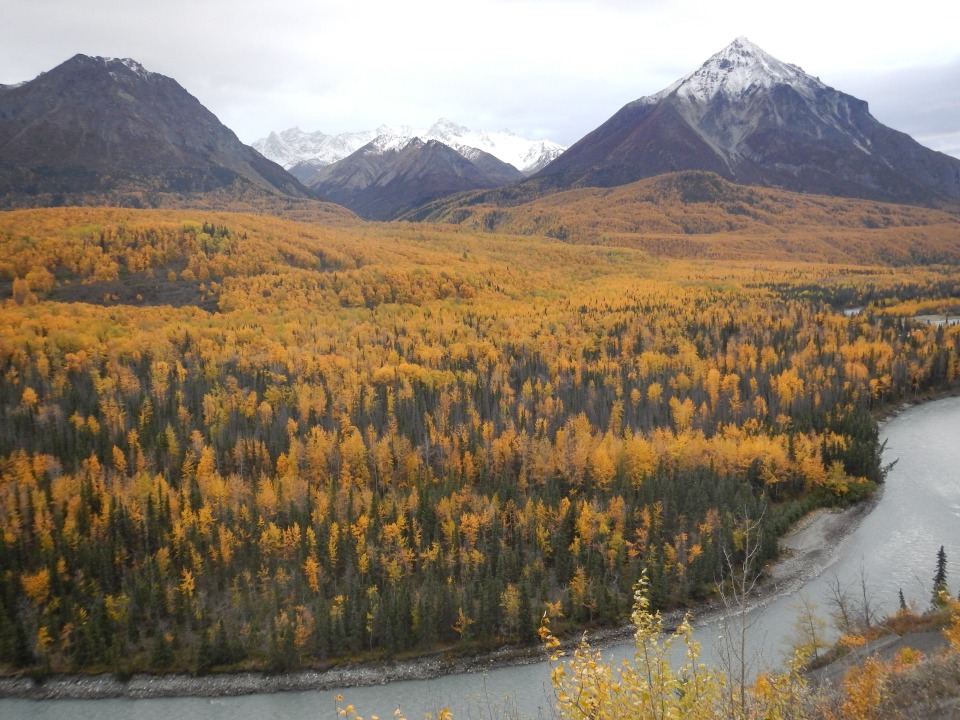
Matanuska River and Chugach Mountains from the Glenn Highway near Chickaloon, on the way to the glacier
There were about 150 people at the festival. We were split into groups of 10-15 students. My group had 14 people. We had all been climbing once or twice before. We had 3 instructors on Saturday, and then 4 on Sunday. Everyone in the group was very friendly and eager to learn. As we walked onto the glacier, I got to know a wildlife biologist who studies walruses, a man from Finland, a dentist, a couple originally from Montreal, and a man from Wasilla (on Sunday, he told me that instead of camping he had driven home for the night and taken a bath). The group was evenly split between men and women, which was cool.
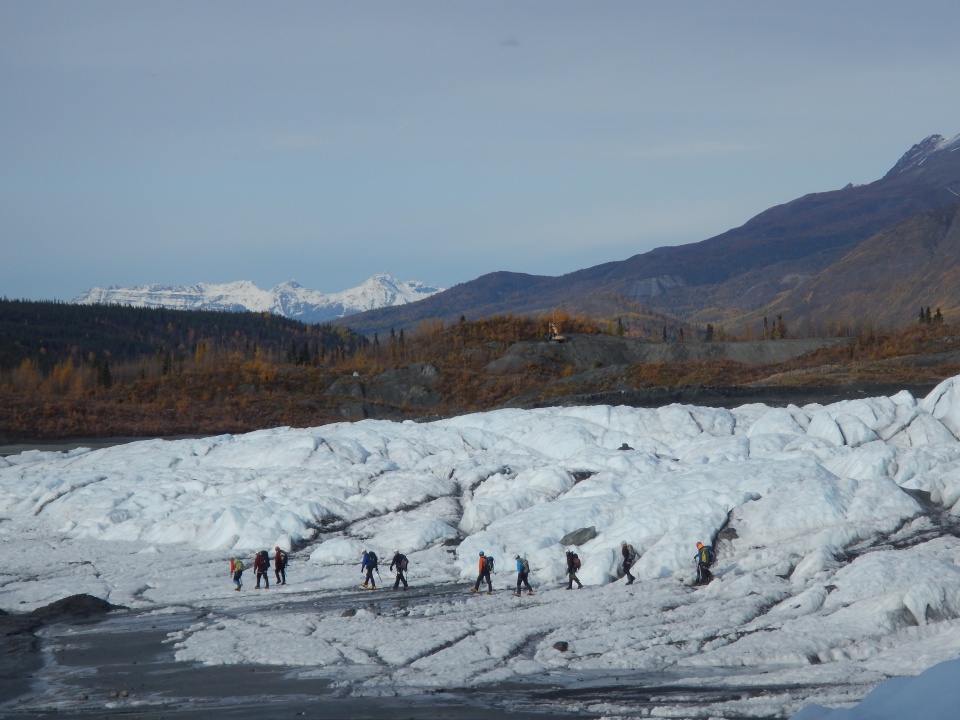
Walking on the glacier
We started by learning to walk in crampons on steep slopes. This is tricky because you have to be sure that all the points of the crampons are sticking into the ice. My tendency was to sidestep, which is no good because you don’t get a good grip.
Once we could walk around safely, the instructors led us to an icewall on the glacier. They set up three ropes, and we were able to climb to our hearts content. This was fantastic. I definitely felt like I was able to improve, because the instructors gave lots of comments and critiques, and because the amount of time I spent climbing let me practice what they suggested.
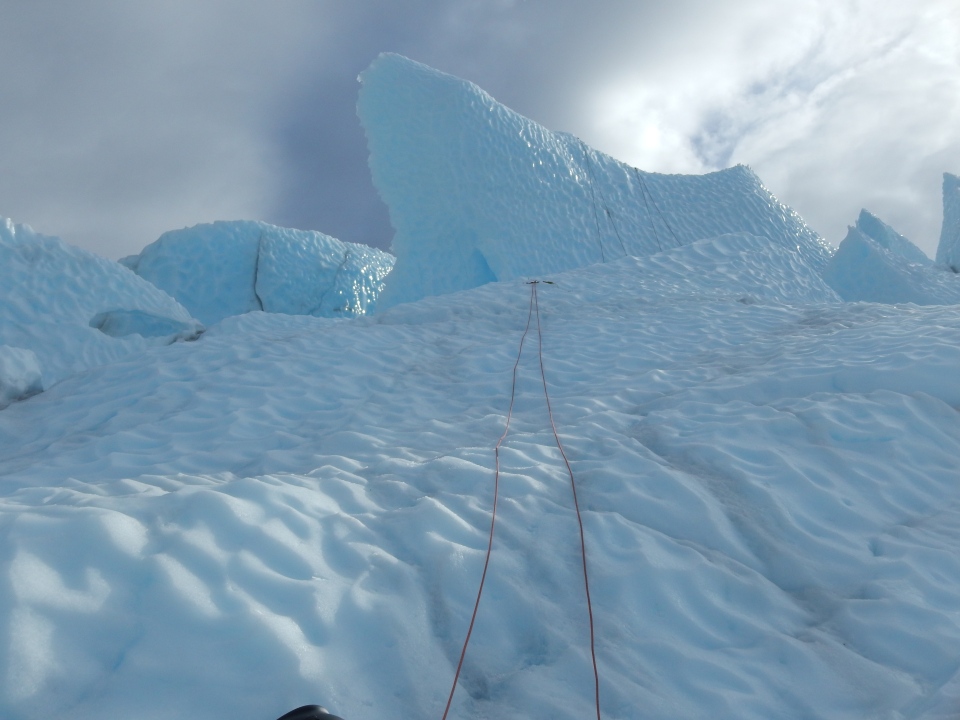
ready to climb
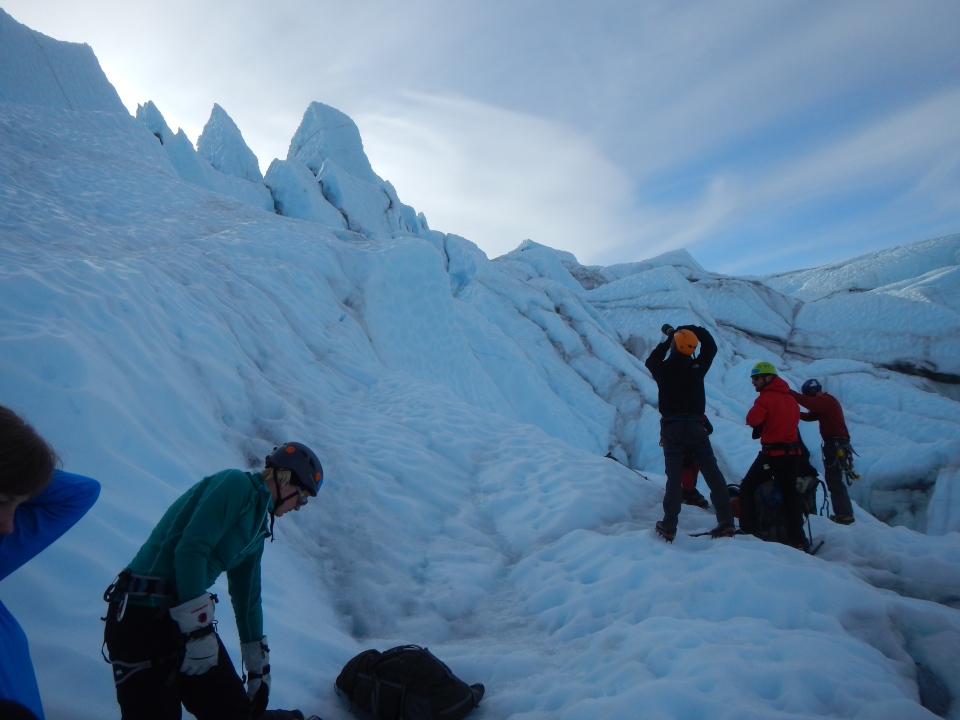
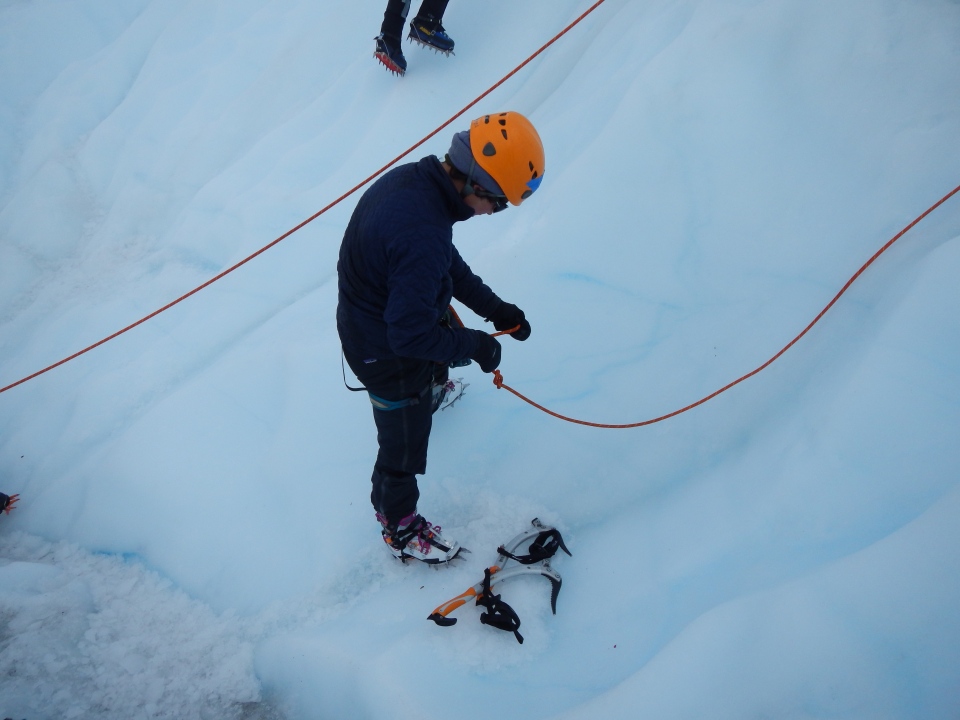
Tying into the rope with a figure 8 follow-through knot
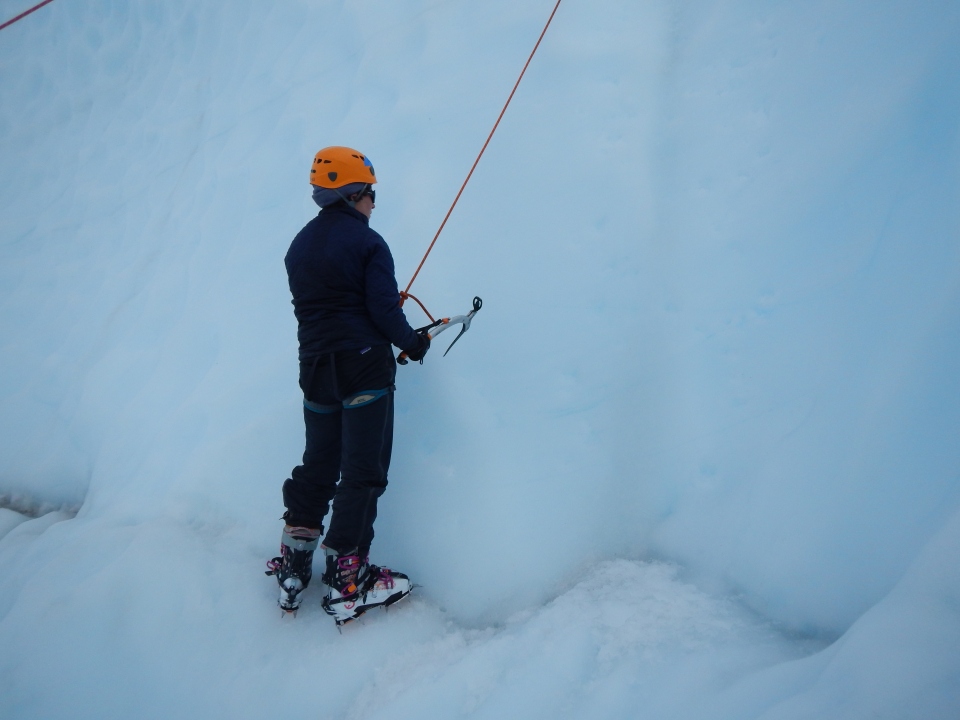
All ready to climb
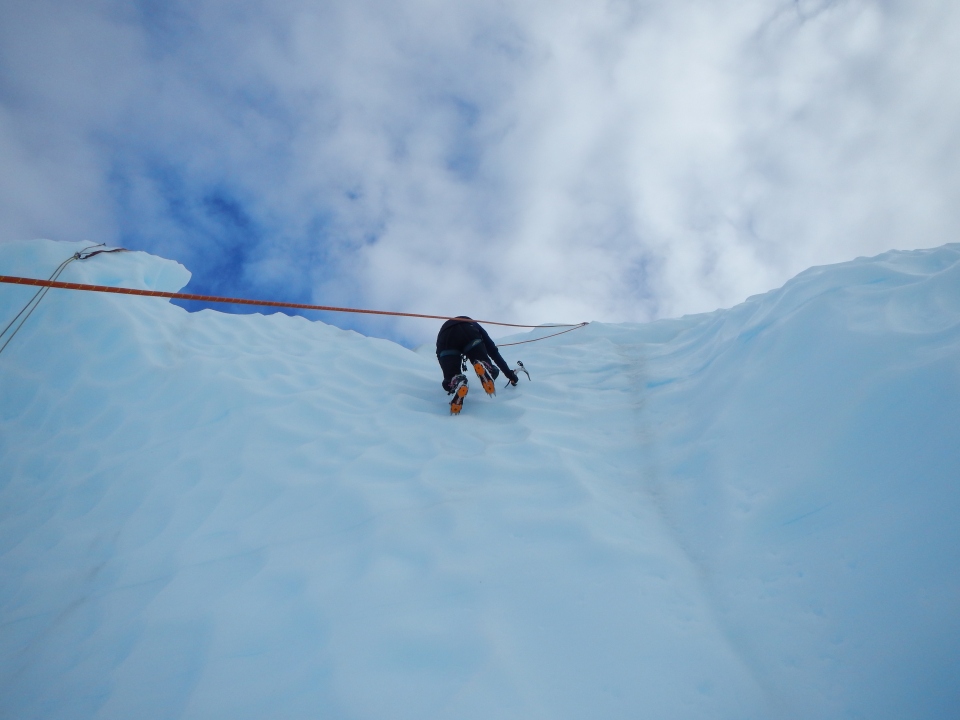
Climbing. I shouldn’t stick my butt out so far– it’s better to keep your weight over your feet
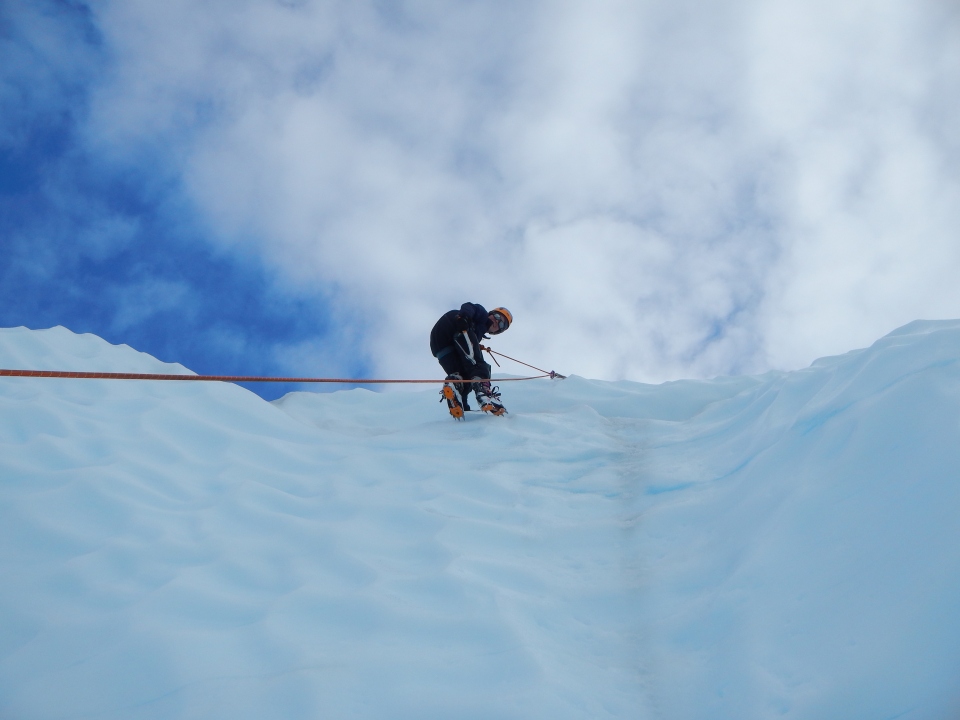
at the top!
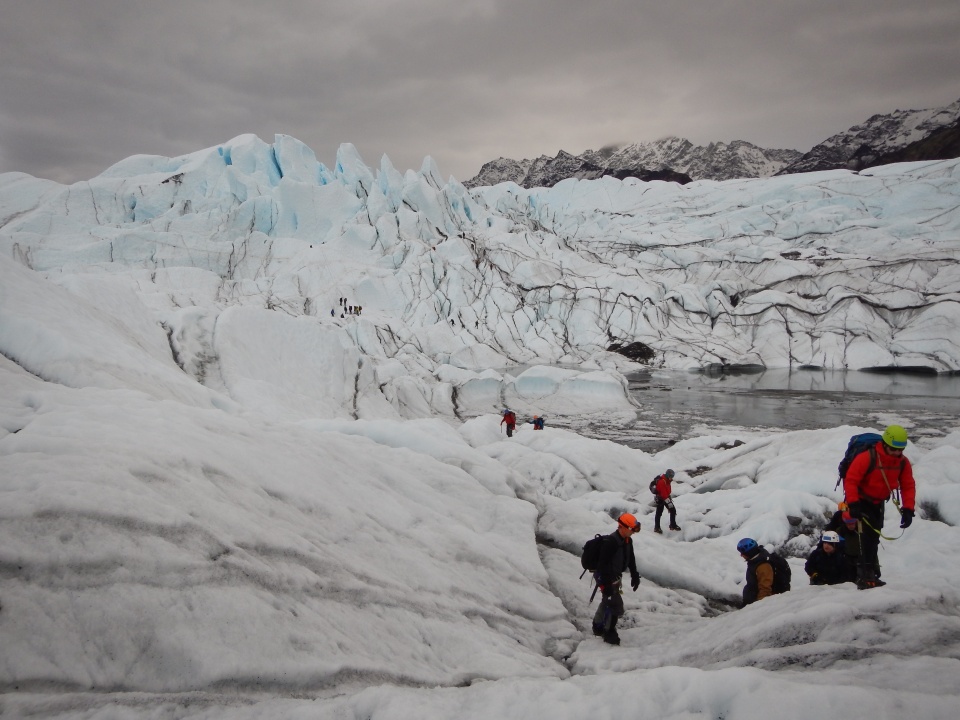
Oodles of people on the glacier
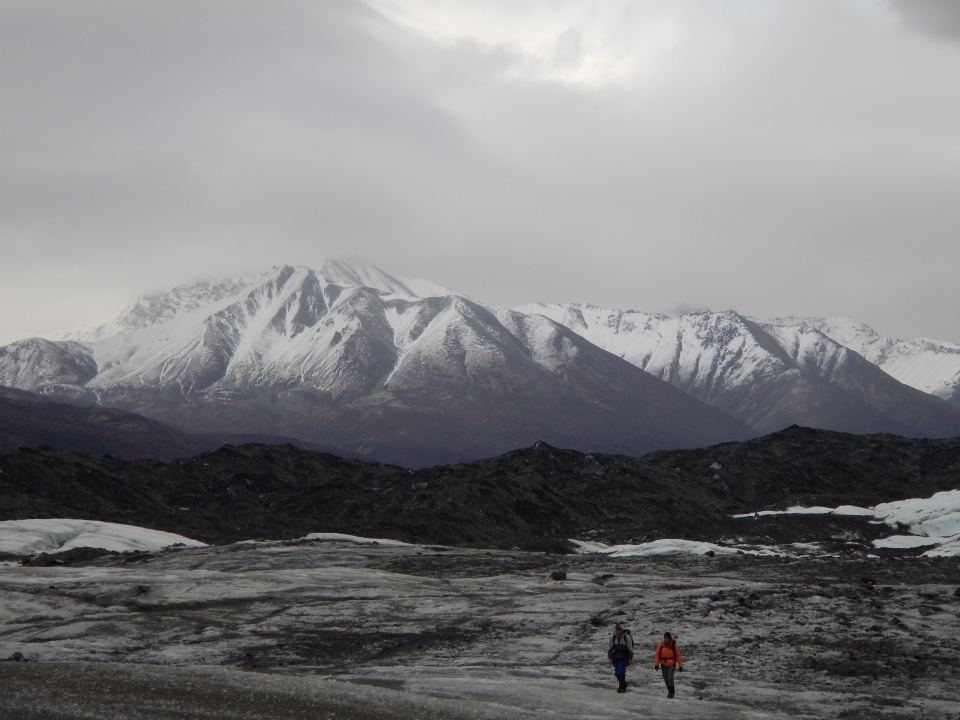
People on the toe of the glacier. This area has so much mud and gravel on the surface that it’s hard to tell that you’re walking on ice
The second day was similar to the first, except that we climbed in a higher area with longer climbs. That was much more challenging. It’s tempting to use your arms to pull up all your weight, because the ice axes feel like they have a stronger grip into the ice than your crampons. But when I did that, I turned into a noodle halfway up the climb. So I had to work on getting good footholds and kicking my feet into the ice really well.
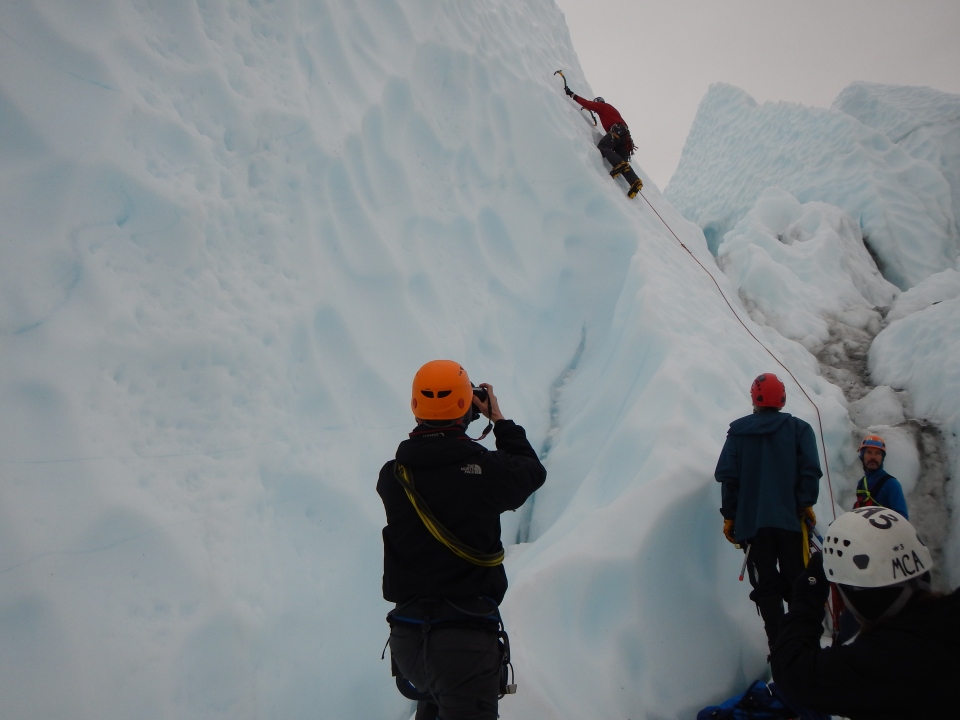
Base camp on the second day. Higher and steeper
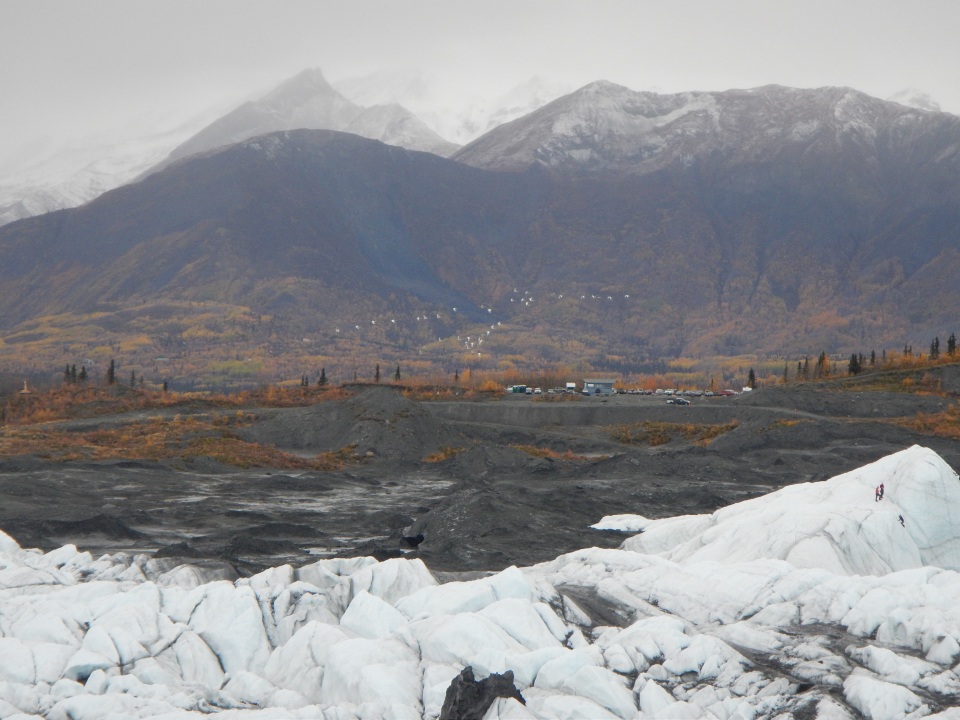
migrating swans
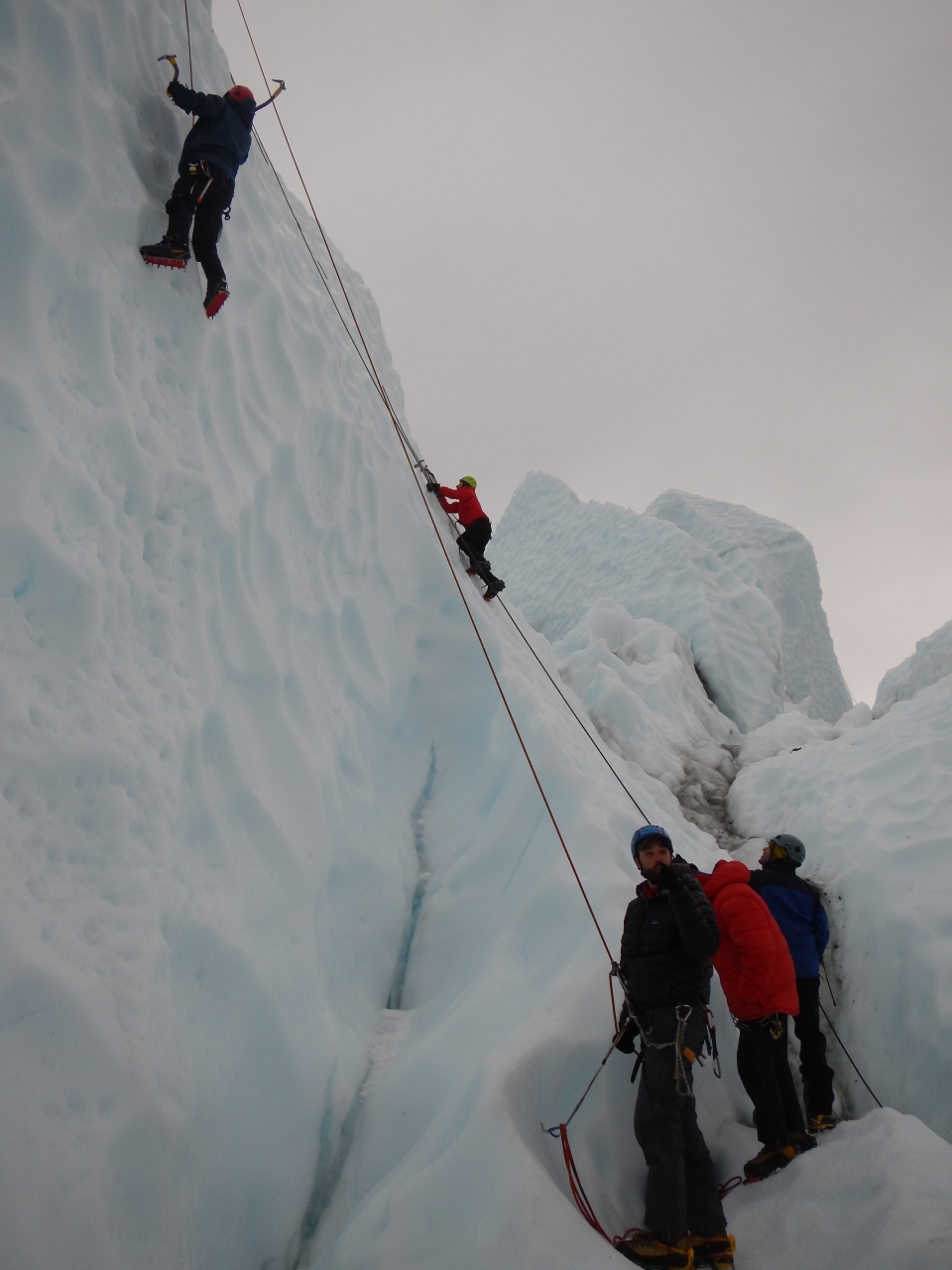
climbing
